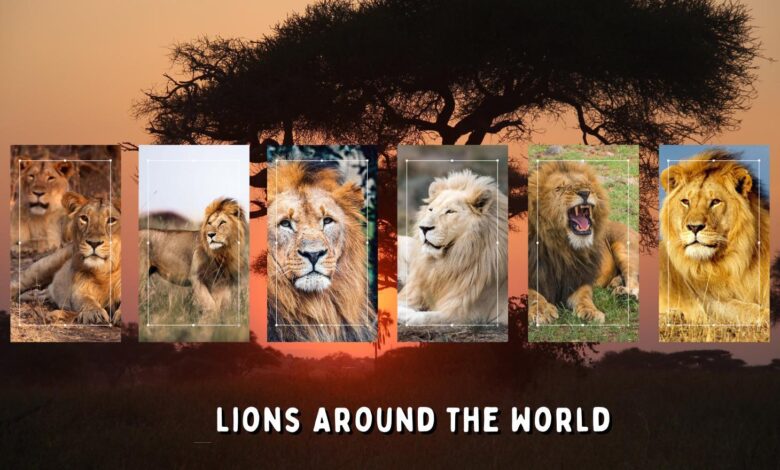Lions Around the World – Know The Types

The classification of lions has been a matter of debate among scientists.
Traditionally, two subspecies were recognized:
- The African
- The Asiatic.
However, recent genetic studies suggest further subdivision, potentially identifying additional subspecies. Despite this ongoing discussion, the conservation focus remains on preserving Lion populations and their habitats regardless of subspecies distinctions.
Different Types of Lions
The Asiatic
The Panthera leo species encompasses two main subspecies: the African lion and the Asiatic lion.
Despite variations in fur color, size, and physical features, all lions share common behaviors such as:
- Living in prides
- Close social bonds
- Cooperative hunting led by lionesses.
These similarities highlight the unity within q species while acknowledging subtle differences among subspecies.
The African
The African Lion, the second largest lion species, boasts a distinctive mane protecting the head and neck during fights. Their fur combines brown, golden, and blonde hues. Living in prides, they communicate through roaring and exhibit affectionate behaviors like touching and purring. Males typically leave the pride after three to four years, while females stay. They mate year-round, with a three-month gestation period yielding three to four cubs.
Katanga
These lions, considered one of the largest lion species, inspire the title “Kings of the Jungle.” While some researchers debate their classification into subspecies, they primarily inhabit specific regions. Living in prides, they are fiercely protective of their family units. The males sport distinctive manes, while lionesses undertake hunting duties. Cubs are taught to hunt from an early age, sustaining themselves on prey like warthogs, zebras, and antelopes.
White
The White Lion, a rare genetic variation of Panthera leo, is primarily found in the Timbavati and Kruger areas. Unfortunately, many are held captive in zoos and circuses worldwide, often enduring poor treatment. While some scientists argue they are at high risk of extinction, others dispute this claim, highlighting the prevalence of misinformation surrounding the species in the public domain.
Masai
These lions, characterized by longer legs and less stocky bodies, feature distinctive traits such as tufts of fur on their knees and less full, backward-combed manes in males. Mane fullness varies with altitude, with higher habitats producing fuller manes. In warmer, humid climates like northern Kenya, manes may be less full or absent altogether.
The Abyssinian
Descended from five males and two females originating in southwestern Ethiopia in 1948, these lions, now residing in a small Addis Ababa Zoo, exhibit shorter stature and distinctive black manes extending from shoulders to stomachs. Their unique DNA, revealed through 15 tests on 20 lions, underscores the need for focused conservation efforts.
Which type is the biggest?
The African lion (Panthera leo) is the largest type, weighing up to 550 pounds. Native to sub-Saharan Africa, they are recognized for their distinctively majestic manes, exclusive to males.
Which type is the strongest?
African lions, apex predators, are famed for their strength, being the largest among African big cats. They exhibit remarkable prowess in taking down prey much larger than themselves, yet dominance within the population fluctuates based on factors like age, size, and experience.




